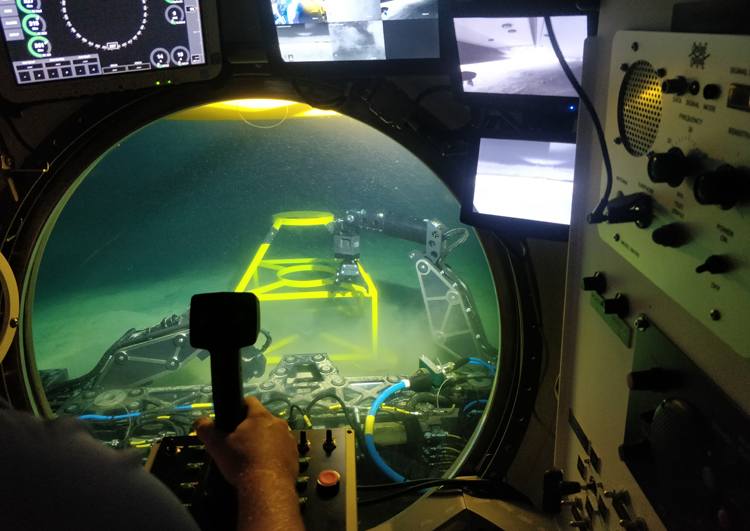INDIAN ARMED FORCES CHIEFS ON OUR RELENTLESS AND FOCUSED PUBLISHING EFFORTS

The insightful articles, inspiring narrations and analytical perspectives presented by the Editorial Team, establish an alluring connect with the reader. My compliments and best wishes to SP Guide Publications.

"Over the past 60 years, the growth of SP Guide Publications has mirrored the rising stature of Indian Navy. Its well-researched and informative magazines on Defence and Aerospace sector have served to shape an educated opinion of our military personnel, policy makers and the public alike. I wish SP's Publication team continued success, fair winds and following seas in all future endeavour!"

Since, its inception in 1964, SP Guide Publications has consistently demonstrated commitment to high-quality journalism in the aerospace and defence sectors, earning a well-deserved reputation as Asia's largest media house in this domain. I wish SP Guide Publications continued success in its pursuit of excellence.
- MoD initiates comprehensive review of Defence Acquisition Procedure 2020, pushes for defence reforms
- G7: The Swansong
- Kalinga Connect: South Asia to Polynesia
- Advanced MRSAM for India for a greater firepower
- Must Credit DRDO for Operation Sindoor, now what is next for defence R&D?
- Operation Sindoor | Day 2 DGMOs Briefing
- Operation Sindoor: Resolute yet Restrained
Unmanned Armed Boats and UW Drones
China, Russia, France, the UK and the US all have considerable capabilities for seabed operations and underwater capabilities. Indian Navy does lack such capability which is urgently required, especially given China’s escalating incursions into the Indian Ocean Region (IOR).
 |
The Author is Former Director General of Information Systems and A Special Forces Veteran, Indian Army |

On October 6, 2022, the Defence Research and Development Organisation (DRDO) successfully tested armed unmanned remote controlled boats. These boats have been jointly developed by the DRDO in collaboration with Sagar Defence Engineering - a private defence production start-up. This was a good prelude to the upcoming DefExpo 2022 that is expected to unveil many new innovations.
Speaking to media after testing the three boats, DRDO Research and Development Establishment Group Director P.M. Naik said, “With no human on the vessel, the video feed will be transferred to the ground control station. It will be useful for surveillance. This boat is useful for reconnaissance and patrolling. Weapon is also mounted on the boat in case of any insurgent. We are currently testing this at Bhama Askhed Dam to build the confidence level of our team." He further said that that the boats are useful for reconnaissance of overall maritime security.
DRDO is developing underwater nuclear capable drones that are likely to be undetectable and uninterruptible, carrying 25-33 kg warheads, and a range of 140 plus nautical miles
According to the media, these boats have an endurance of about four hours. Currently, the boat can sail at a maximum speed of 10 nautical miles per hour. However, the speed can be further increased to 25 nautical miles per hour. Some variants of these boats use an electric propulsion system with lithium batteries, while others have a petrol engine on board.
A social media post says that the DRDO is developing underwater nuclear capable drones that are likely to be undetectable and uninterruptible, carrying 25-33 kg warheads, and a range of 140 plus nautical miles. This perhaps is the beginning of a DRDO project. But the Indian Navy does lack such underwater capability which is urgently required; especially given China’s escalating incursions into the Indian Ocean Region (IOR). Our Navy’s underwater offensive capabilities are presently limited to submarines. However, only three-four submarines are modern with the rest being of the 1980 vintage.

In 2021, the Navy had announced its intent to purchase many unmanned aerial and undersea systems to considerably increase its observation capacity. The Navy also stated that it would prioritise domestic procurement of unmanned systems.
Larsen & Toubro (L&T) has inked a MoU with Bengaluru-based NewSpace Research & Technologies to design and manufacture underwater launched UAVs
In June 2022, the Ministry of Defence (MoD) initiated a preliminary procedure to acquire autonomous underwater vehicles (AUVs) or underwater drones with dual observation and strike capabilities. Concurrently, the media stated that the DRDO is also attempting to improve submarine situational awareness and real-time imagery.
During the ‘Swavlamban 2022’ conclave held on July 18-19, 2022, the Navy unveiled a roadmap to develop more than 75 indigenous new technologies and products. A Memorandum of Understanding (MoU) has been signed between the DRDO and the Naval Innovation and Indigenisation Organisation (NIIO) to work on a collaborative project named SPRINT (Supporting Pole-Vaulting in Research & Development) through Innovations for Defence Excellence (iDEX) and Technology Development Acceleration Cell (TDAC).

Under the DRDO’s Technology Development Fund programme Larsen & Toubro (L&T) has inked a MoU with Bengaluru-based NewSpace Research & Technologies to design and manufacture underwater launched UAVs. The L&T-NewSpace Research & Technologies underwater drone named ‘Amogh’ is reported to initially be used for surveillance. However, no timeline has been made public for its construction.
Mazagon Dock Limited (MDL) has launched a programme to develop an extra Large Unmanned Underwater Vehicle (XLUUV). The XLUUV is meant to perform tasks like periodic communication, payload deployment, pre-programmed mission execution, and return to base.
Concurrently, the Mazagon Dock Limited (MDL) has launched a programme to develop an extra Large Unmanned Underwater Vehicle (XLUUV). The XLUUV is meant to perform tasks like periodic communication, payload deployment, pre-programmed mission execution, and return to base. The internal and exterior cargo capacities are meant to be reconfigurable depending on mission-specific requirements.

The Indian Navy has Deep Sea Submergence Vehicles (DSSVs) for submarine rescue (deep-submergence rescue vehicle (DSRV)), which may also be utilised for specific purposes other than submarine rescue. It also has INS ‘Sagardhwani’ which is to have a DRDO developed system for launching AUVs. A prototype was reportedly made by the DRDO in 2015 but there have been no reports of any trials having been conducted.
China, Russia, France, the UK and the US all have considerable capabilities for seabed operations and underwater capabilities. China has several UUVs which have mapped the deep waters worldwide. UUVs are also used in subsea warfare. For instance, China’s HSU001 UUV is designed for seabed warfare capabilities, allowing it to remain undetected on the ocean below for lengthy periods. China also has the highest budget for deep sea activities, like the US.
China’s HSU001 UUV is designed for seabed warfare capabilities, allowing it to remain undetected on the ocean below for lengthy periods
The recent sabotage of Russia’s Nord Stream underwater pipeline (most likely by the US) has highlighted the significance of such capability which can have strategic repercussions. Undersea pipelines and underwater internet cables can be damaged or cut, which are live threats today that also adversely affect countries at large since the underwater cable networks cater for both the military and civilian communications.
Finally, the Navy needed underwater armed drone capabilities ‘yesterday’ and indigenous development is likely to take few years from now. The ‘Make in India’ in conjunction foreign original equipment manufacturers (OEMs) would be good. However, given the criticality, government would need to consider a mix of imports, indigenous manufacture under license, and ‘Make in India’ – same as in the case of armed aerial drones for the Army and the Air Force.





